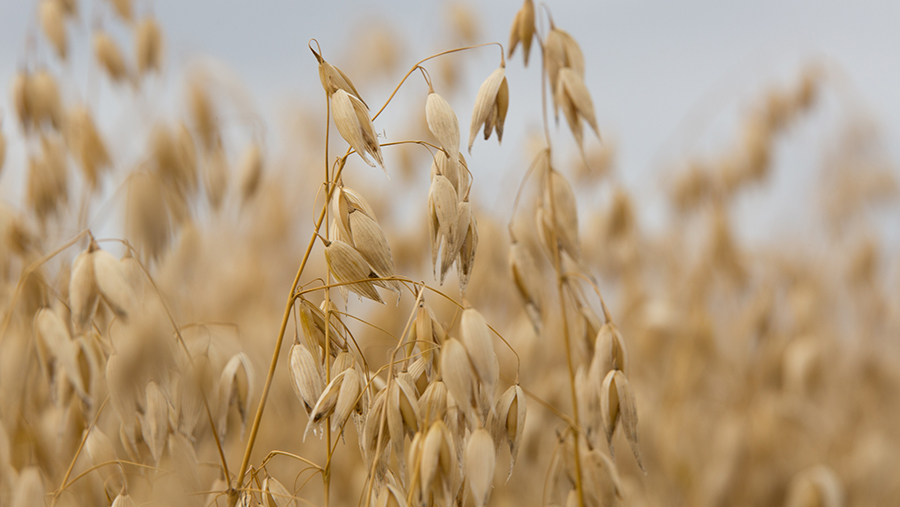Oat market under pressure from high volumes
 © Tim Scrivener
© Tim Scrivener The oat market looks set to come under further pressure, with analysts suggesting 2019 produced the biggest crop since the 1970s and spring oat plantings forecast to rise sharply next year.
Oat prices have already fallen back significantly from a year ago, with milling oats last month trading for an average of £116.60/t on the spot market for December delivery, compared to an average spot price of more than £185/t in December 2018.
AHDB has published its annual supply and demand estimates for 2019-20 which suggest oat production this season is 1.215m tonnes – 19% – higher than a year earlier and 27% up on the provisional production estimate of 1.082mt.
See also: New advice on how to raise spring oat yields
Meanwhile, AHDB’s Early Bird Survey of planting intentions, published last week, suggests that the spring oat area could reach 200,000ha in 2020, as growers are forced to abandon their winter crop plans in the face of one of the worst autumns in memory.
According to the latest analysis, human and industrial use of oats is expected to stay relatively steady in 2019-20 at 530 kilotonne (kt), while animal feed demand is forecast to grow by 14%.
But despite forecasts of an 89% increase in exports, end-of-season stocks could still end up at 240kt – 124kt higher than in 2018-19.
Limited options
“While exports are expected to rise to 70kt, that is nowhere near enough to eat into the sizeable oat crop which will need to find a home,” said AHDB.
“With limited options for the surplus we are likely to see large volumes carried through to next season.
“This will add further weight to a market which is likely to see pressure from a large area increase in spring oats.”
AHDB pointed out that a high proportion of oats were grown on futures-linked contracts and so the prices paid to those growers would not have declined to the same extent as the spot market.
“Contracts for oats are one way to reduce income volatility, particularly with the open market likely to be pressured by consecutive large oat crops.”
AHDB supply and demand forecast 2019-20
- Highest surpluses of wheat and barley since 2015-16, with higher yields and larger planted areas both driving up production
- Total cereals demand for animal feed estimated at 13.204m tonnes – 2% higher than last year
- Cereals inclusions in ratios is anticipated to be higher, but total animal feed production is set to be down because of a fall in ruminant feed demand
- Maize imports are estimated to fall back, but remain higher than the previous five-year average
